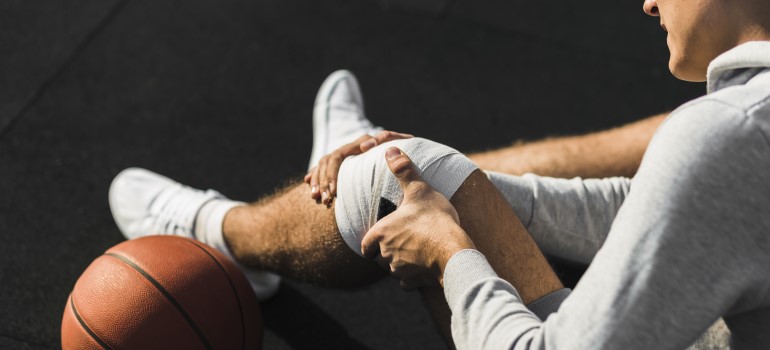Sports injuries are common occurrences among athletes, ranging from minor sprains to more severe ligament tears or fractures. These injuries can significantly impact an athlete’s performance and overall well-being. Physiotherapy plays a major role in the rehabilitation process, aiding athletes in recovering from sports injuries and returning to their pre-injury level of performance. In this article, we will discuss six ways in which physiotherapy can help in sports injury rehabilitation.
1. Injury Assessment and Diagnosis:
The first step in sports injury rehabilitation is a thorough assessment and diagnosis of the injury. Physiotherapists are skilled in evaluating the extent and nature of sports injuries. Through physical examinations and diagnostic tests, they identify the specific structures affected, such as muscles, tendons, ligaments, or bones. Accurate assessment enables the development of an appropriate treatment plan tailored to the athlete’s needs.
2. Pain and Inflammation Management:
Managing pain and inflammation is essential during the early stages of sports injury rehabilitation. Physiotherapists utilize various techniques, including ice and heat therapy, electrical stimulation, and ultrasound, to alleviate pain and reduce swelling. They can also apply manual therapy techniques, such as soft tissue mobilization or joint mobilization, to promote healing and reduce discomfort.
3. Restoring Range of Motion and Flexibility:
Sports injuries often result in a loss of range of motion and flexibility in the affected area. Physiotherapists will teach some specific exercises and stretching techniques to restore joint mobility and flexibility. These exercises are designed to target the injured structures while considering the athlete’s overall physical condition. Gradually increasing the range of motion helps to prevent stiffness and promotes tissue healing.
4. Strengthening and Conditioning:
Once pain and inflammation are under control, the focus shifts to strengthening the injured area and surrounding muscles. Physiotherapists develop individualized exercise programs that gradually increase in intensity, targeting the specific muscles and structures affected by the injury. These programs include resistance training, functional exercises, and proprioceptive training to restore the strength, stability, and coordination. Strengthening and conditioning are crucial for a safe and successful return to sports activities.
5. Balance and Proprioception Training:
Sports injuries can disrupt an athlete’s balance and proprioception, which is the body’s ability to sense its position in space. Physiotherapists incorporate balance and proprioception training exercises into rehabilitation programs. These exercises challenge the athlete’s stability and enhance neuromuscular control, reducing the risk of re-injury. By improving balance and proprioception, athletes regain confidence in their movements and reduce the likelihood of future injuries.
6. Sport-Specific Training and Functional Rehabilitation:
As an athlete progresses through rehabilitation, the focus shifts to sport-specific training and functional rehabilitation. Physiotherapists work closely with athletes to simulate the movements and demands of their particular sport. This includes agility drills, sport-specific exercises, and gradually reintroducing the athlete to their sport’s activities. Sport-specific training ensures a smooth transition back to competitive play while minimizing the risk of re-injury.
Physiotherapy plays a vital role in the successful rehabilitation of sports injuries. Through comprehensive injury assessments, pain and inflammation management, restoration of range of motion, strengthening and conditioning exercises, balance and proprioception training, and sport-specific rehabilitation, physiotherapists guide athletes on their journey to recovery. By collaborating with physiotherapists and following personalized rehabilitation programs, athletes can regain their strength, mobility, and confidence, allowing them to return to their sport at their full potential. Remember, a thorough and gradual rehabilitation process is key to ensuring a safe and successful return to sports after an injury.





